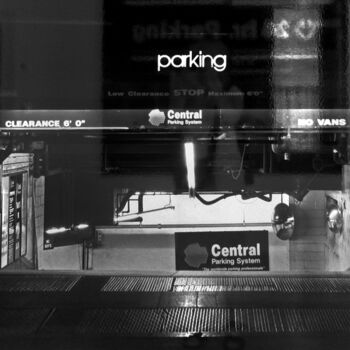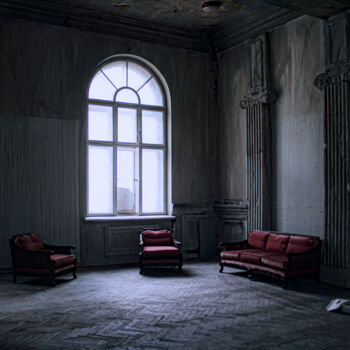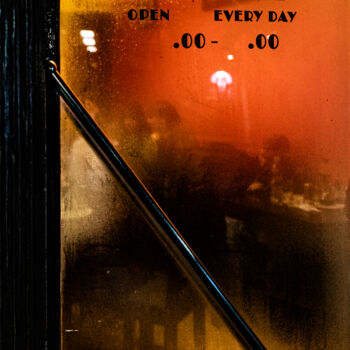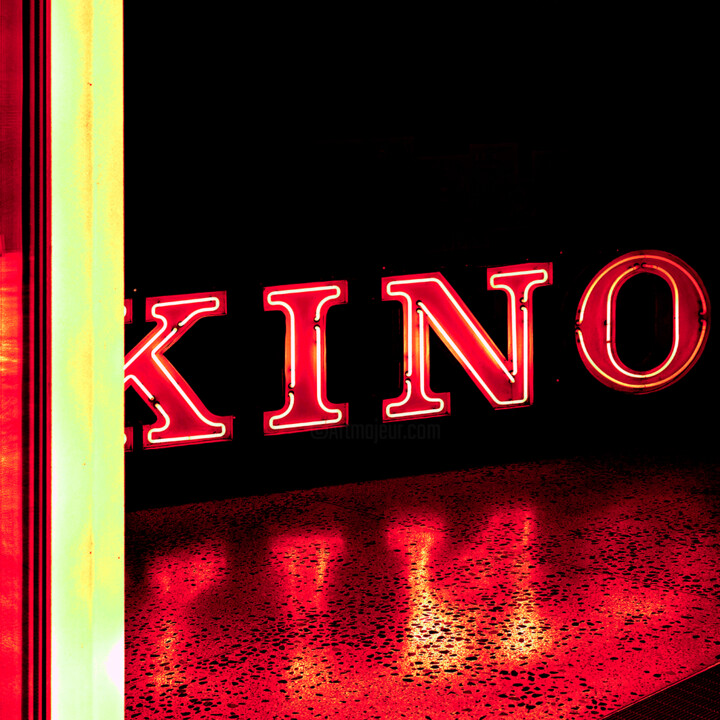

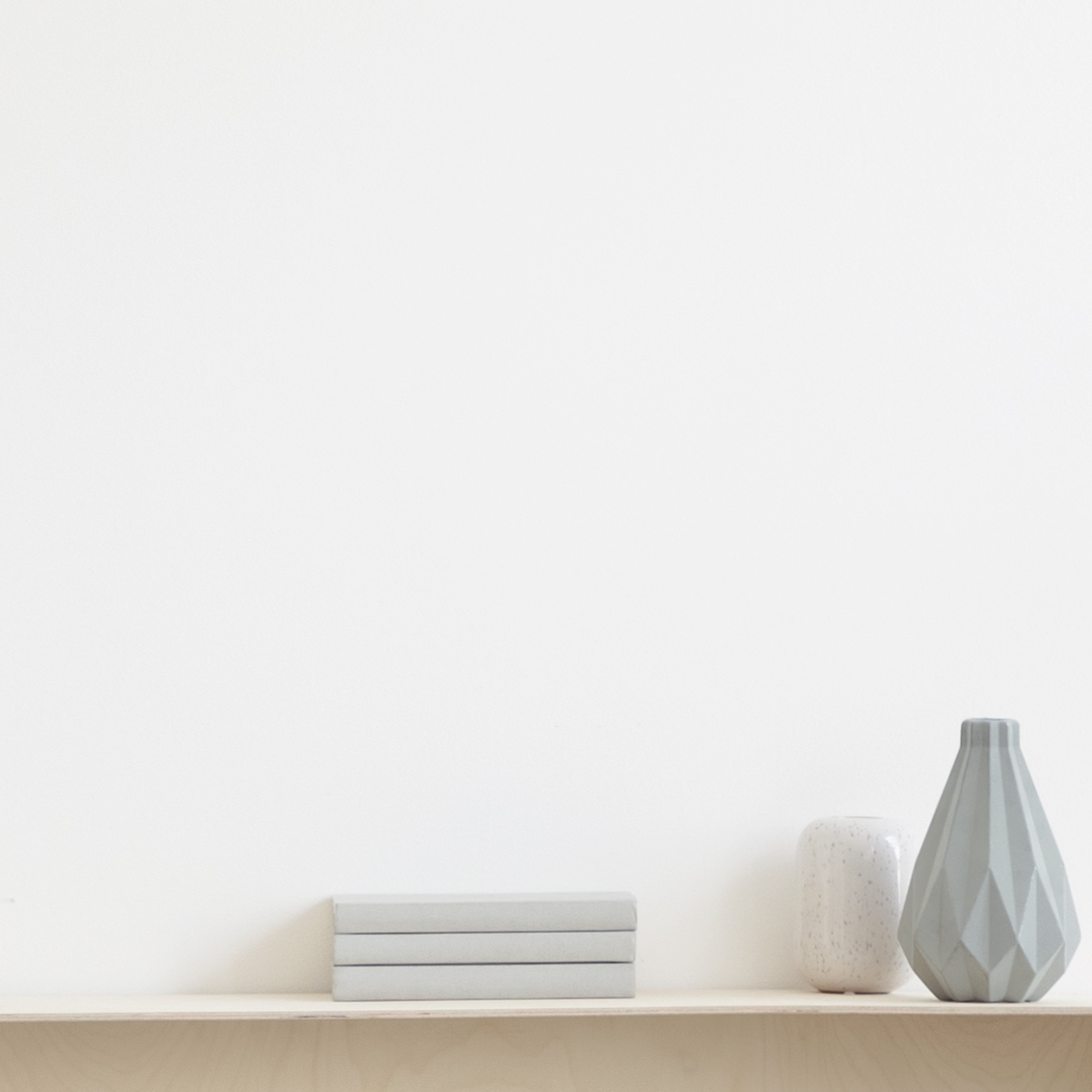
Laat het ons weten als je meer foto's van dit kunstwerk wilt zien!
- Achterkant van het werk / Kant van het werk
- Details / Handtekening / Het oppervlak of de textuur van het kunstwerk
- Kunstwerk in situatie, Ander...
CINEMA 19:43 # 16. FROM THE SERIES: CINEMA (2019) Fotografie door Marta Lesniakowska
Meer info
- Verpakking (Doos of kartonnen verpakking) Alle kunstwerken worden verzonden met een premium carrier, zorgvuldig beschermd en verzekerd.
- Tracking Opvolging van de levering tot aan de bezorging bij de koper. Er wordt een tracking nummer verstrekt zodat u het pakket in real-time kunt volgen.
- Vertraging Wereldwijde levering in 3 tot 7 dagen (Schatting)
- Douane niet inbegrepen De prijs is exclusief douanekosten. De meeste landen hebben geen invoerbelasting voor originele kunstwerken, maar het kan zijn dat u de verlaagde btw moet betalen. Douanekosten (indien van toepassing) worden bij aankomst berekend door het douanekantoor en worden apart in rekening gebracht door de vervoerder.
Meer info
- Volgbaar online certificaat van echtheid Echtheidscertificaten kunnen op elk moment online worden geverifieerd door de code van het kunstwerk te scannen.
- Certificering van de Kunstenaarswaarde De experts bestuderen het werk en de carrière van een kunstenaar om een onafhankelijke en vetrouwbare gemiddelde waarde vast te stellen. De gemiddelde waarde stelt de kunstenaar in staat zich voor een bepaalde periode in een prijsklasse te plaatsen. Ook kan aan de deskundige gevraagd worden om een precieze schatting te geven voor een specifiek werk.
Meer info
100% veilig betalen met SSL-certificaat + 3D Secure.
Meer info
-
Beperkte editie (#1/5)
Fotografie,
Digitale fotografie
/
Niet gemanipuleerde fotografie
/
Digitale afdruk
op Papier
- Dimensies Hoogte 15,8in, Breedte 15,8in
- Staat van kunstwerk Het kunstwerk is in perfecte staat
- Framing Dit kunstwerk is niet ingelijst
- Categorieën Foto's onder US$ 5.000 Minimalisme stad
Pole obrazowe tej minimalistycznej fotografii z neonem nieczynnego kina zbudowane zostało ze słowa, geometrii, diagonali i znanej ze stylu film noire gry światło-ciemność. Z drugiej strony agresywny kolor słowa-obrazu jako ekwiwalentu kina jest powiązane z analogową estetyką fotografii barwnej lat sześćdziesiątych-osiemdziesiątych XX wieku i sztuki artystów popkulturowych, którzy stosowali słowa jako narzędzia estetyczne, czasem przekształcane w abstrakcyjne formy bez dosłownego znaczenia. Moja fotografia dialoguje więc z fotografią Williama Egglestona i z obrazami-słowami Eda Ruschy, prekursora kultury słów w ruchu, „nieustraszonego badacza języka i obrazu”. Ten anachronizm ma w mojej fotografii znaczenie. Pulsująca czerwień neonu wyłania się z obramowanej żółtą ramą czarnej pustki i powiela w zmętnionym odbiciu posadzki, determinując, jak w teście Rorschacha, psychofizjologię percepcji. Ewokuje poczucie spleenu, melancholii i widmowości przywołującej anachronicznie etos modernistycznego kina z jego atmosferą ciemnej sali kinowej, interpretowanej jako prefiguracja platońskiej jaskini. Jej obrazowym ekwiwalentem jest „New York Movie” Edwarda Hoppera (1939) z postacią samotnej bileterki w niemal pustej żółto-czerwonej sali kinowej. Moja fotografia jest metamodernistyczną grą z melancholijną poetyką hopperowskiego spojrzenia i kierując wzrok widza poza obraz odnosi się do jego istoty: problemu ramy jako parergonu, marginesu koniecznego, by ustanowiona została widzialność przedmiotu, jak pisze Mieke Bal za Derridą. Rama, zauważa z kolei Gilles Deleuze, dokonuje deterytorializacji obrazu, czyniąc go fragmentem sytuacji niedookreślonej, z której został wycięty stając się „drugim tekstem”, niezależnym od tego, co widzimy. W dekadrażu więc, od tego co widoczne, bardziej znaczące jest to, co znajduje się poza ramą, ukryte w mroku, widmowe, a co w perspektywie psychoanalitycznej jest wizualnym kluczem do semantyki „wyobrażonego znaczącego” (Christian Metz). Moja fotografia dotyczy więc samych podstaw kina i obrazu. Odsłania i zarazem skrywa swoją wielowarstwowość i nieoczywistość, transmediując na różnych poziomach równocześnie z kulturową tradycją kina i z obrazem Hoppera, w którym reżyser Sam Mendes dostrzegł, jak światło i cień „tworzą coś więcej niż tylko nastrój; ukrywają lub ujawniają myśli i emocje. […] Zaczynasz wyobrażać sobie, co znajduje się po obu stronach kadru, […] co znajduje się poza kamerą". Oraz, last but not least, oniryczną atmosferą ostatniego seansu filmowego w dystopijnym wnętrzu kina w filmie „Goodbye, Dragon Inn” z 2003 roku Tsai Ming-lianga.
Te złożone relacje są tematem mojego fotograficznego sequela zarówno obrazu Hoppera, jak filmu Tsai Ming-lianga. Kino, zredukowane do neonowego słowa jako jego (kina) obrazu ekwiwalentnego, zostaje jednak przeniesione w dzisiejszy kontekst kultury akceleracji społeczeństwa usieciowionego, gdzie daje się obserwować „paradoksalna płodność anachronizmu” (Didi-Huberman): ponowna potrzeba cielesnego doświadczania sali kinowej jako prymarnej przestrzeni w historii kina. Moja fotografia to zatem metamodernistyczna transmediacja z modernistyczną tradycją, poprowadzona po to, by pytać, czy i jak rezonuje ona w dzisiejszej kulturze XXI wieku. (ml)
Fotografia wyróżniona przez kuratora Artmajeur w dziale Ekskluzywne galerie 2023: "Czerwony"
The cinema, as well as the car park, the hotel, the night bar and the shop windows are canonical figures that define the modernist city, whose vision, imagery was constructed in its own aesthetic way by modernist painting, photography and film.
The pictorial field of this minimalist photograph with the neon sign of a defunct cinema was constructed from words, geometry, diagonals and the play of light and dark known from the film noire style. On the other hand, the aggressive colour of the word-image as equivalent to the cinema is linked to the analogue aesthetic of 1960s-eighties colour photography and the art of pop culture artists who used words as aesthetic tools, sometimes transformed into abstract forms without literal meaning. My photography thus dialogues with the photography of William Eggleston and with the images-words of Ed Ruscha, a precursor of word culture in motion, a 'fearless explorer of language and image'. This anachronism is significant in my photography. The pulsating red of the neon sign emerges from the yellow-framed black void and replicates in the cloudy reflection of the floor, determining, as in a Rorschach test, the psychophysiology of perception. It evokes a sense of spleen, melancholy and spectrality recalling anachronistically the ethos of modernist cinema with its atmosphere of the dark cinema room, interpreted as a prefiguration of a Platonic cave. Its pictorial equivalent is Edward Hopper's 'New York Movie' (1939) with its figure of a lone ticket taker in an almost empty yellow and red cinema hall. My photograph is a metamodernist play with the melancholic poetics of the Hopperian gaze and, by directing the viewer's gaze beyond the image, it addresses its essence: the problem of the frame as parergon, the margin necessary for the visibility of the object to be established, as Mieke Bal writes after Derrida. The frame, Gilles Deleuze notes in turn, performs a deterritorialisation of the image, making it a fragment of the underdetermined situation from which it has been cut by becoming a 'second text', independent of what we see. In decadrage, then, what is more significant than what is visible is what is outside the frame, hidden in darkness, spectral, and which, in a psychoanalytic perspective, is the visual key to the semantics of the 'imagined signifier' (Christian Metz). My photography thus concerns the very foundations of cinema and the image. It reveals and at the same time conceals its multilayeredness and non-obviousness, transmediating on different levels simultaneously with the cultural tradition of cinema and with Hopper's painting, in which director Sam Mendes saw how light and shadow 'create more than a mood; they hide or reveal thoughts and emotions. [...] You begin to imagine what is on either side of the frame, [...] what is off-camera". And, last but not least, the dreamlike atmosphere of the final film screening in a dystopian cinema interior in Tsai Ming-liang's 2003 film “Goodbye, Dragon Inn”.
These complex relationships are the subject of my photographic sequel to both Hopper's painting and Tsai Ming-liang's film. Reduced to the neon word as its (cinema's) equivalent image, the cinema is nevertheless relocated to today's context of the accelerating culture of a networked society, where the 'paradoxical fecundity of anachronism' (Didi-Huberman) can be observed: the renewed need for the bodily experience of the cinema room as a primordial space in the history of cinema. My photography is thus a metamodern transmediation with the modernist tradition, guided to ask if and how it resonates in today's 21st century culture. (ml)
Photograph featured by curator Artmajeur in Exclusive Galleries 2023: "Red"
Collector's photography color/ digital on archival paper Hahnemühle Photo Rag Baryta 315g (semi-flash), archival paper, acid-free/ signed on the front and on the back / dated 2019/print BAT (bon a tirer) 2023/ Format 40x40 cm on a paper 50x50 cm
Verwante thema's
KinoWilliam EgglestonEd RuschaEdward HopperFotografia Kolorowa
Marta Lesniakowska is beeldend kunstenaar, maar tegelijkertijd ook historica en kunstcriticus, ze doet onderzoek naar beeldcultuur. Dit is wat zijn benadering van fotografie bepaalt: een strategie van de "blik die onthoudt", die vertrouwde beelden uit de kunstgeschiedenis oproept om ze over te dragen/intertextualiseren. Haar dialoog met hen bestaat erin zich af te vragen of het mogelijk is hun betekenissen op te roepen en wat ze vandaag zijn of kunnen zijn. Ze is gefascineerd door licht - de rol ervan in de constructie van het beeld, het parergon dat het beeld creëert. Daarom analyseert ze in straatfotografie het samenspel van licht en donker, de relatie tussen scherpte en onscherpte en het doordringen van beelden als gelijktijdige realiteiten. Zo brengt ze het mysterieuze karakter van de stad naar voren, verwijzend naar de esthetiek van de zwarte cinema en naar de meester van de 20e-eeuwse straatfotografie, Saul Leiter.(ml)
Als ze fotografeert, is niets meer of minder belangrijk voor haar; zijn blik wordt vaak beheerst door de principes van minimalistische dichters: een economie van detail, de ontdekking van subteksten en insinuaties die verborgen zijn in onzichtbare objecten en stukjes alledaagse realiteit.
Marta Lesniakowska woont en werkt in Polen. Zijn werken maken deel uit van openbare collecties (Nationaal Museum in Wroclaw, Museum van Bydgoszcz) en privécollecties (Nederland, Denemarken, Duitsland, Zweden, Zwitserland, Verenigde Staten).
-
Nationaliteit:
POLEN

- Geboortedatum : onbekende datum
- Artistieke domeinen: Werken van professionele kunstenaars,
- Groepen: Professionele artiest Hedendaagse Poolse Kunstenaars




